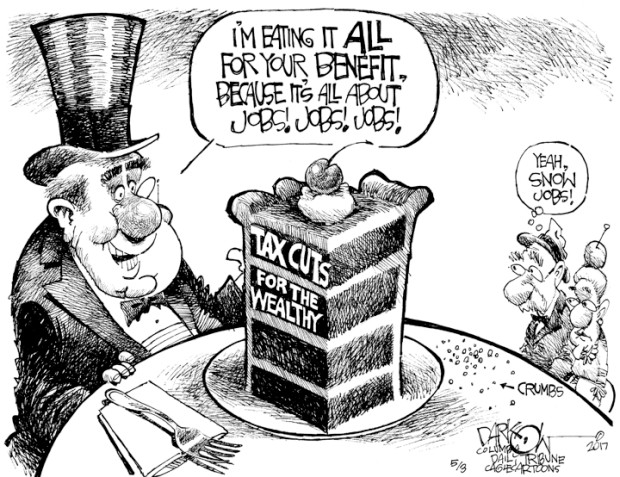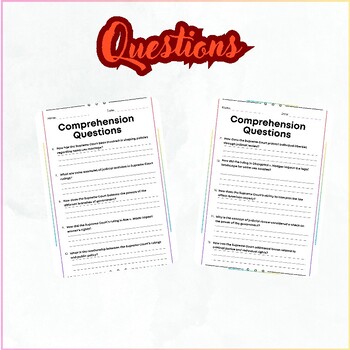

Reawakening the American Dream? Examining Trump’s Impact on the Middle Class
The American Dream: that shimmering ideal of upward mobility, of a life better than your parents’, has been a cornerstone of national identity for generations. But in recent decades, this dream has felt increasingly elusive for many in the middle class. Donald Trump’s presidency, built on a promise to “Make America Great Again,” offered a starkly different vision, one that resonated deeply with a segment of the population feeling left behind. Did his policies deliver on this promise for the middle class? The answer, as we’ll see, is complex and multifaceted, defying simple narratives of success or failure.
The Trumpian Narrative: A Promise of Resurgence
Trump’s campaign centered around a potent message: restoring American manufacturing, reducing regulations stifling economic growth, and renegotiating unfavorable trade deals. These promises resonated particularly with working-class communities who had experienced job losses and economic stagnation. The narrative portrayed a middle class unfairly burdened by globalism and government overreach, promising relief through protectionist policies and tax cuts.
Economic Indicators: A Mixed Bag
Analyzing the economic reality of the Trump years requires looking beyond the headline numbers. While the unemployment rate did reach historic lows, a closer examination reveals a nuanced picture. Many of the newly created jobs were in lower-paying sectors, failing to significantly lift wages for a substantial portion of the middle class.
| Metric | Pre-Trump (2016) | Trump Era (Avg.) | Change |
|---|---|---|---|
| Unemployment Rate (%) | 4.7 | 3.6 | -1.1 |
| Median Household Income ($) | $59,039 | $68,703 | +$9,664 |
| Real Wage Growth (%) | 0.7% | 0.8% | +0.1% |
While median household income saw an increase, real wage growth remained relatively stagnant, suggesting that the increase may not reflect substantial improvements in the standard of living for many. Further, the benefits of economic growth during this period were not evenly distributed, disproportionately benefiting higher-income earners.
The Impact of Tax Cuts:
The 2017 Tax Cuts and Jobs Act, a centerpiece of Trump’s economic agenda, significantly lowered corporate and individual income taxes. Proponents argued this would stimulate economic growth, leading to higher wages and increased investment. However, critics countered that the cuts disproportionately benefited corporations and the wealthy, with limited trickle-down effects on the middle class. Empirical evidence on the long-term impact remains debated.
Trade Wars and Their Consequences:
Trump’s trade policies, characterized by tariffs on imported goods, aimed to protect American industries and jobs. While some sectors saw temporary benefits, others suffered from increased costs and reduced competitiveness. The impact on the middle class was uneven, with some workers benefiting from protectionist measures while others faced higher prices for consumer goods. The overall economic effect of these trade wars remains a subject of ongoing analysis.
Beyond the Numbers: A Qualitative Perspective
Analyzing solely economic indicators provides an incomplete picture. The Trump administration’s rhetoric and policies fostered a sense of nationalistic pride and a renewed focus on domestic issues. This resonated with some segments of the middle class yearning for a return to traditional values and a sense of community. However, this same rhetoric also fueled divisions and anxieties, particularly amongst those feeling marginalized or left behind by the changing economic landscape.
Conclusion: A Legacy of Unfulfilled Promises?
Whether Trump’s policies ultimately benefited or harmed the middle class remains a contentious issue. While some experienced positive economic outcomes, such as decreased unemployment, the benefits were not universally felt. Wage stagnation, uneven distribution of economic gains, and the disruptive effects of trade wars all cast shadows on any claims of a significant revival of the American Dream. Ultimately, the legacy of the Trump era on the middle class will be debated and analyzed for years to come, requiring a far more nuanced understanding than simple economic metrics can provide. The search for a truly effective path to revitalizing the American Dream for all continues.

Additional Information
Reawakening the American Dream? A Deeper Dive into Trump’s Impact on the Middle Class
While the assertion that Donald Trump’s presidency “reawakened the American Dream” for the middle class is highly debatable, a thorough analysis requires moving beyond simplistic claims and examining the complex interplay of economic factors during his administration. A nuanced understanding necessitates dissecting the impact across various dimensions, acknowledging both perceived gains and undeniable challenges.
1. The Economic Landscape Inherited and the Initial Promise:
Trump inherited an economy recovering from the Great Recession, experiencing moderate growth under Obama. His campaign centered on promises of significant economic revitalization, focusing on deregulation, tax cuts, and a protectionist trade agenda. The argument for a “reawakening” rests primarily on the initial positive economic indicators:
-
Decreased Unemployment: The unemployment rate did fall to historic lows under Trump, reaching levels not seen since the 1960s. However, it’s crucial to note that this decline was a continuation of a trend begun under the previous administration, and the extent to which specific Trump policies contributed remains a subject of intense debate. Furthermore, the decline didn’t uniformly benefit all segments of the middle class; wage stagnation for many persisted.
-
GDP Growth: While GDP growth experienced periods of relative strength, it’s important to contextualize this within long-term historical trends and compare it to the growth rates of other developed nations. Attributing specific percentages to direct Trump administration policies is difficult due to the multitude of factors influencing economic growth.
2. The Tax Cuts and Jobs Act (TCJA) of 2017: A Case Study in Disparate Impact:
The TCJA is a central piece of evidence often cited by supporters of Trump’s pro-middle-class policies. The act significantly lowered corporate and individual income tax rates. However, its impact on the middle class was far from uniform:
-
Benefits for High-Income Earners: A substantial portion of the tax benefits disproportionately flowed to higher-income households, widening the income inequality gap. While some middle-class families experienced modest tax savings, these were often outweighed by other factors such as rising healthcare costs.
-
Limited Impact on Wages: The promised surge in wages and investment driven by the tax cuts failed to materialize to the extent anticipated. While some companies did announce bonuses or increased investments, the overall effect on middle-class wages was limited and arguably overshadowed by rising inflation in certain sectors.
3. Trade Wars and Their Ripple Effects:
Trump’s protectionist trade policies, including tariffs on imported goods, aimed to revitalize American manufacturing and reduce the trade deficit. However, the consequences were mixed:
-
Increased Prices for Consumers: Tariffs led to higher prices for consumers on many imported goods, impacting household budgets and reducing disposable income for many middle-class families.
-
Negative Impact on Certain Industries: While some domestic industries benefitted, others suffered due to retaliatory tariffs imposed by trading partners. This resulted in job losses in sectors reliant on international trade, negating any potential gains in other areas.
4. The Role of Automation and Technological Change:
It’s crucial to acknowledge the impact of broader technological and automation trends on the middle class, irrespective of specific presidential policies. Job displacement due to automation continues to be a significant challenge, particularly in manufacturing and other traditionally middle-class sectors. This necessitates a broader discussion beyond the direct impact of any specific administration.
5. Conclusion: A Complex Reality:
Determining the true impact of Trump’s presidency on the American middle class requires a nuanced analysis that goes beyond simplistic narratives. While some economic indicators showed positive trends, the benefits were far from uniformly distributed, and several policies arguably exacerbated existing inequalities. The narrative of a “reawakened American dream” needs to be critically examined against the backdrop of persistent wage stagnation, rising healthcare costs, and the disruptive forces of globalization and technological change. A comprehensive assessment requires a more granular analysis of data across various demographic groups and a deeper understanding of the complex interplay of economic factors beyond the direct influence of any single administration.




